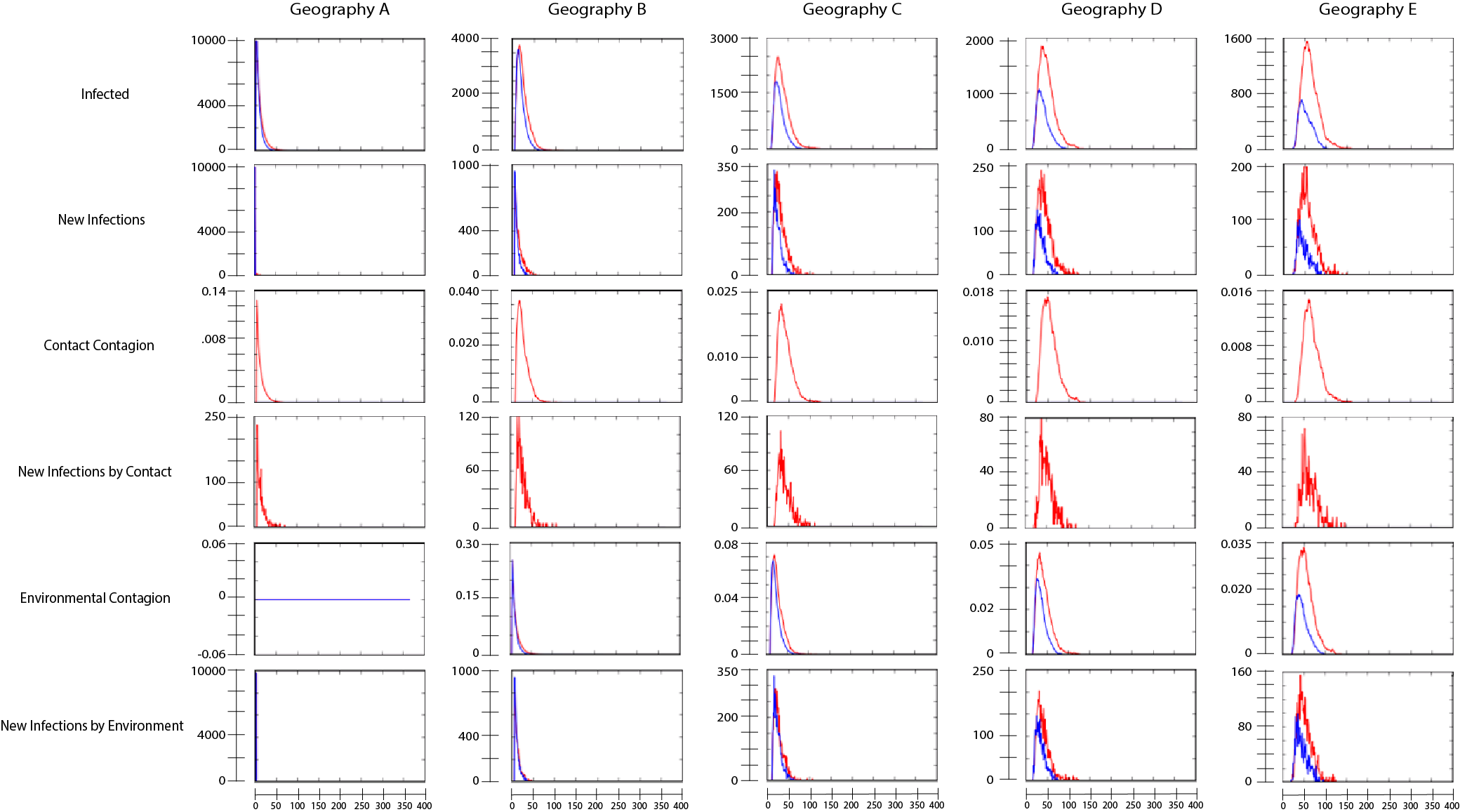Multi-route HINT¶
The environmental model extends the capabilities of the generic model by adding a second route of exposure: whereas generic relies on contact between individuals to transmit disease, the environmental simulation type allows for both the contact route and an “environmental” route. Because of this addition, the framework of Heterogeneous Intra-Node Transmission (HINT) was extended to create Multi-route HINT, HINT using two exposure routes.
How to configure Multi-route HINT¶
Multi-route HINT utilizes the same configuration as HINT, but each route will be specified separately. Specifically,
In the configuration file, set the following:
Enable_Heterogeneous_Intranode_Transmission to 1.
Base_Infectivity to your desired value.
If you have not already added property values in the demographics file, add them using the steps in Individual and node properties.
In the demographics file, within each object in the IndividualProperties array, add the TransmissionMatrix parameter and assign it an empty JSON object.
In the object, set the following:
Route to the the transmission route. There will be two routes: “Contact” and “Environmental”. Note that there will also be two transmission matrices, one for each route.
Matrix to an array that contains a transmission matrix that scales the base infectivity set in the configuration file. This matrix is described in more detail in Property-based heterogeneous disease transmission (HINT), and there will be two, one for each route.
The following example illustrates how to set up Multi-route HINT for 3 geographic regions across the two exposure routes:
{
"Defaults": {
"IndividualProperties": [{
"Property": "Geographic",
"Values": ["A", "B", "C"],
"Initial_Distribution": [0.34, 0.33, 0.33],
"TransmissionMatrix": {
"contact": {
"Matrix": [
[1.0, 0.0, 0.0],
[0.0, 1.0, 0.0],
[0.0, 0.0, 1.0]
]
},
"environmental": {
"Matrix": [
[0.0, 3.0, 0.0],
[0.0, 0.0, 3.0],
[0.0, 0.0, 0.0]
]
}
}
}]
}
}
IndividualProperties¶
Each route must have an IndividualProperty specified, but the properties do not need to be the same across the two routes. Recall that IndividualProperties consist of key:value pairs (see Individual and node properties for more information). The currently supported version of the model only supports one key per route and up to 5 values for the given key.
5 region Multi-route HINT example¶
The following example is designed to represent a set of communities situation along a river. There is one HINT key, “Geographic” with 5 values, “A” through “E,” to represent each of the 5 communities.
Each route, contact and environmental, has its own HINT matrix. The contact matrix is an identity matrix such that transmission only occurs over the contact route in the same HINT group (i.e. community). The environmental matrix is configured such that there is only environmental transmission from A to B, B to C, C to D, etcetera, to represent that the river flows from A to E.
Epidemiological relationships between the individuals in each group is defined in the demographic file, and the population distribution is even across all 5 groups.
All HINT matrix values are scalars and can be > 1.

In the plot above, the environmental HINT values are set to 20, and the contact values are set to 1.0 (shown in red) and 0 (shown in blue). Overall transmission is greater in cases where both modes of transmission are present.¶